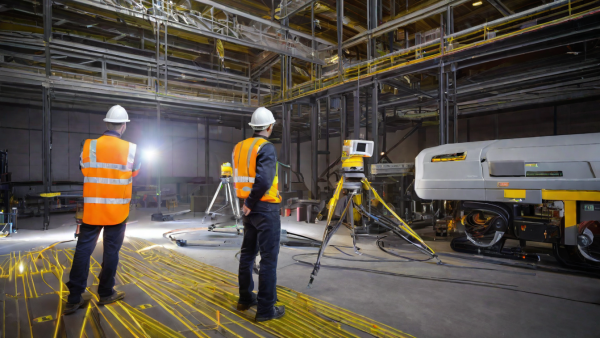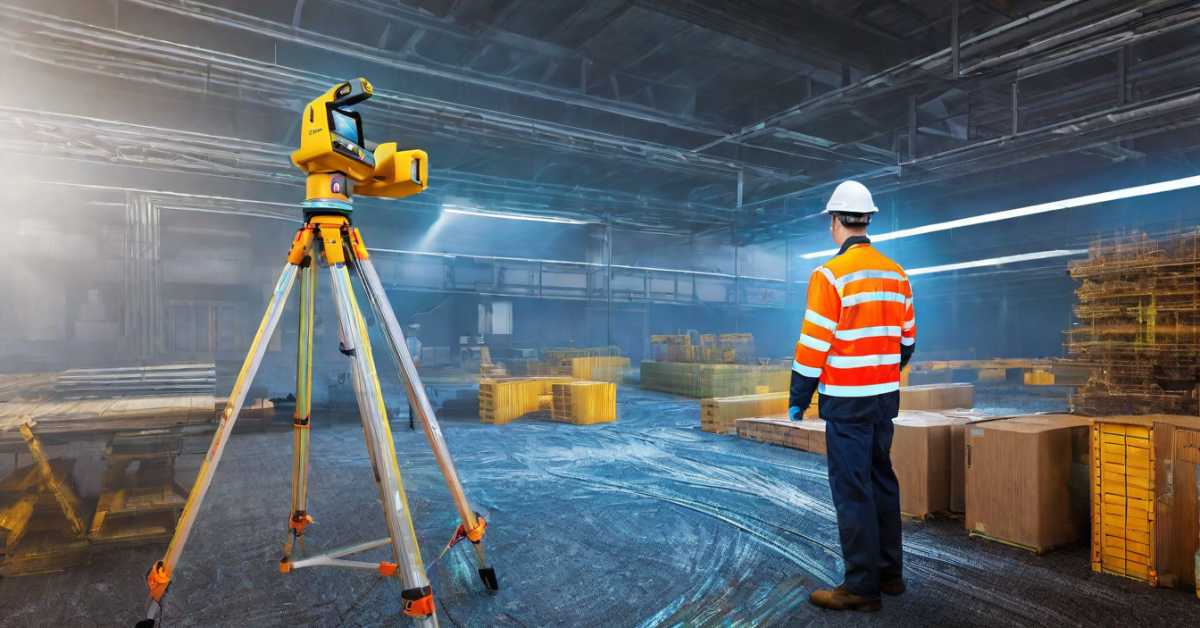Welcome to SCANM2.COM – Your Gateway to Precision 3D Laser Scanning Solutions! We’re at the forefront of revolutionizing industries with cutting-edge technology. Our services encompass comprehensive 3D laser scanning surveys, utilizing state-of-the-art LiDAR technology and advanced point cloud processing techniques. If you’re looking for a trusted laser scanning company and want to know the 3D Laser Scan Survey Cost, look no further than SCANM2.COM.
At SCANM2.COM, we understand the importance of 3D Laser Scan Survey Cost and cost-effectiveness, offering competitive pricing and transparent breakdowns, ensuring you get the most value for your investment. Our 3D laser scanning services are tailored to meet your specific needs, providing accurate data that empowers your projects.
Elevate your projects with accurate 3D data and seamless Scan-to-BIM conversions. Explore the future of scanning with SCANM2.COM! Whether you’re in need of precise measurements for architectural projects or engineering applications, our team of experts is dedicated to delivering top-notch results.
Discover how our expertise can help you navigate the world of 3D Laser Scan Survey Cost. Trust SCANM2.COM for all your 3D laser scanning needs, and let us enhance your business with accurate and cost-effective solutions. We pride ourselves on being a reliable partner in the industry, offering unrivaled expertise in laser scanning and delivering exceptional results for our clients.

What is a 3D laser scan survey?
A 3D laser scan survey is like using a special camera to take a 3D picture of a building. It helps us see all the details of the building in a 3D way. The laser scanner emits a beam of laser light that measures the distance to every object it hits. We use the data to make a 3D point cloud, which digitally shows the surface of the object.
The development of this remarkable technology began with devices known as laser range finders. In the 1980s, technology improved with the use of LIDAR systems, which could map objects from above. In the 1990s, we figured out how to do 3D scanning from the ground, which is what we mostly use today for scan projects.
A 3D laser scanner can give lots of detailed information about a building’s structure when used to inspect it. The 3D laser scanner shows the building’s shape, materials, and any problems it has. This is helpful for people who are planning to fix up old buildings or build new things inside them.
The scanner does this by shooting out lots of laser beams and timing how long it takes for the light to bounce back. It executes this process abnormally quickly, capturing a multitude of measurements all at once. Then, it uses these measurements to make a point cloud, which is like a 3D dot-to-dot picture of the building.
Some software used in the 3D scanning:
Archicad, AutoCAD, Revit, and Sketchup is the software solution for a 3D Scanning process.
Once we have the point cloud, we can use it to make all kinds of valuable things. We can create a 3D model from this, make plans for each floor, or even see if new designs will fit in the building.
This tool is formidable. It allows us to understand buildings in a better way and helps us make plans for the future. This is a great example of reality capture.
How Much Does a 3D Laser Scan Survey Cost?
The cost of a 3D laser scanning survey, provided by laser scanning companies, is influenced by several factors. It primarily depends on the size and complexity of the project, the level of detail required, and the type of equipment used. Costs can range from $2,000 to more than $100,000.
Smaller projects, such as scanning a residential house or a fast-food restaurant, are typically less complex and can often be completed within a single day. These projects are generally on the lower end of the cost spectrum.
Medium-sized projects, like a factory filled with various machines and intricate piping systems, require a more detailed approach. The increased complexity and time needed for these projects result in a higher cost.
Large-scale projects involve scanning massive structures or a group of buildings, such as a hospital complex or a shopping mall. The complexity and scale of these projects significantly increase the time and resources required, leading to a higher cost, often exceeding $100,000.
As for the cost of 3D laser scanning, it is almost always priced at a per square foot / square meter rate. This rate starts high for smaller jobs and rapidly drops as the scope becomes larger.
For smaller projects, you could expect rates as high as $0.20/per square foot ($2/sq. m). For the largest projects rates can be as low as $0.07/per square foot ($0.70/sq. m).
However, these are just general guidelines. The final price can fluctuate depending on the unique needs of your project.
Therefore, we encourage you to reach out to us for a detailed quote tailored to your specific needs. We’re here to help you navigate the realm of 3D laser scanning surveys and ensure you get the best value for your investment. Let’s start your project today!
Factors Influencing the Cost of 3D Laser Scanning Surveys
Here are some factors which influence the cost of 3D laser scanning services.
1. The Shape and Complexity of the Object:
The shape and complexity of the scanned object or building significantly affect the cost. For example, a building with lots of intricate details or a complex shape might take longer to scan accurately. This means more time and work, which can increase the cost.
2. The Size of the Project:
The magnitude of the project holds significant importance. More significant projects usually mean more work, and more work usually means a higher cost. We consider the size of the area we’re scanning. We also determine the amount of detail the scan needs.
3. Extra Information Needed:
Sometimes, we need to know extra information such as color and materials. Getting this extra information can take more time and work, which can increase the cost.
4. The Level of Accuracy:
The more accurate the survey needs to be, the more it might cost. Because higher accuracy might require more advanced equipment. We need more time to ensure that everything is exactly correct.
5. The Level of Detail:
Just like with accuracy, more detail can mean a higher cost. This is because getting all those extra details can take more time and work.
6. The Final Result:
The desired outcome from the survey can influence the overall cost. For a detailed 3D model from the scan, it might need more time and work.
This is because of the complex process of data interpretation and model creation. This is because making a 3D model from the data needs extra steps.
7. The Equipment Used:
The selection of scanning equipment can significantly influence the overall expenditure. More advanced scanners that can capture higher-resolution data might be more expensive to use.
8. The Company Doing the Scanning:
Finally, the company that is conducting the scanning can affect the cost. Companies determine their prices based on several factors, including the type of equipment they use, the skill level of their workers, and their own business costs.
Importance of 3D Laser Scanning surveys
3D laser scanning surveys are critical for several reasons:
1. High Level of Accuracy:
One of the main advantages of 3D laser scanning surveys is their precision. They provide highly accurate and detailed data, which is essential in fields like construction, engineering, and architecture. This detailed information helps professionals make smart choices using reliable data, lowering the chance of expensive mistakes.
2. Efficiency and Cost-Effectiveness:
Compared to traditional survey methods, 3D laser scanning surveys are like super-speedy superheroes! They work much faster than old-fashioned survey methods.
Consider getting a lot of information in a short time. That is the procedure they undertake! This means they can finish projects faster and it costs less money.
Additionally, the data we collect that transformed into 3D models on a computer. This saves even more time and resources. The ability to possess a magic wand, that aids in removing all obstacles, makes it as simple as possible.
3. Versatility and Wide Range of Applications:
3D laser scanning has versatility and finds use in a wide range of applications. From building construction and renovation to historic preservation and archaeology, 3D laser scanning provides valuable insights. Manufacturing can use it to check quality, and entertainment can use it to make 3D models for games or movies.
4. Improved Safety:
Safety is a critical concern in many industries, particularly in construction and engineering. 3D laser scanning surveys can help improve safety by identifying potential issues early on. For example, they can reveal structural weaknesses in a building or help identify hazardous areas on a construction site. By addressing these issues beforehand, we can prevent accidents and improve the overall safety of the project.
5. Driving Innovation:
The world of 3D laser scanning is like a fast car, always moving forward quickly! New ideas and better ways of doing things are popping up all the time. This means we can see and understand the world around us in new and exciting ways.
And guess what? As this cool technology keeps getting better and better, we’ll find even more ways to use 3D laser scanning in the future.
Application of 3D Laser Scanning surveys.
3D laser scanning surveys are popular in many areas because they can gather data quickly and accurately. Here are some detailed applications:
1. Architectural, Civil, and Mining Engineering:
3D laser scanning is like a superhero in these jobs! It can take super detailed measurements and make 3D models of complicated places. For example, in building design, it’s like having a magic tool that can make a perfect model of a building that needs fixing.
In road design, it’s like having a special map maker for massive projects like bridges, roads, and tunnels. And in mining, it’s like having a safety guide that can make detailed maps of mining sites for planning and keeping everyone safe.
2. Industrial Construction:
In industrial construction, companies commonly use 3D laser scanning to build and set up factories. This tool is especially useful when we need to make existing structures bigger or stronger.
The 3D laser scanner operates by capturing highly accurate measurements of the existing state of the factory. These measurements are so accurate that they can show us the exact shape and size of everything in the factory.
This info is crucial for planning and executing factory changes and construction work. It helps us make sure everything fits together correctly.
3. Retrofit and Installation Projects:
For retrofit and installation projects, 3D laser scanning offers a practical solution. The current structure provides precise measurements, which you can use to plan and carry out changes or installations.
4. Piping and Ductwork Design:
3D laser scanning is useful in industries with pipes and ducts, like oil and gas or HVAC. It helps measure and model complicated piping systems, which can assist in designing and installing new systems.
5. Accident Reconstruction and Change Detection:
3D laser scanning enables land surveying, including the detection of changes and the reconstruction of accidents. You can use it to record accident scenes or track changes in landforms or structures over time.
6. 3D Drawing Creation and Pre-Project Scanning:
Many people often use 3D laser scanning surveys for creating 3D drawings and scanning before starting a project. Before starting a project, analyze the environment or object to create a detailed 3D model for planning and designing.
7. Preservation of Cultural Heritage:
As 3D laser scanning technology becomes more accessible, its applications in fields such as cultural heritage preservation are expanding. It lets us study old sites and things without causing any harm.
8. Dimensionally Accurate Surveys:
People commonly use laser scanning for facades, damages, and building documentation, as well as accurate surveys. This can be particularly useful in industries like real estate, where precise measurements of buildings and properties are essential.
What is the duration of a 3D laser scanning process.
3D laser scanning is a sophisticated procedure. It uses light to capture how objects and places look and their shape.
The process of capturing a highly detailed 3D image is indeed intricate. As for the duration, it can vary significantly depending on numerous factors.
Scanning an object of a larger size significantly increases the time required. A small thing might only take a few minutes to check, while a large building could take several hours.
The complexity of the object or area is another crucial factor. The level of detail required for the project can also affect how long it takes. If an object has lots of small details, it can take more time to scan. We need more time to thoroughly check hard-to-reach areas.
The type of 3D laser scanner used can also make a difference. Some scanners are faster than others, and the speed can also depend on the specific settings used for the scan. It’s like how some cameras can take photos faster than others.
Typically, a 3D laser scanner can take a few minutes to several hours to finish a scan. But keep in mind, that this is just the time for the scanning itself. Once the scanning is complete, we need to process the data to create the final 3D model. This can take more time.
We can’t determine the exact time required for a 3D laser scan. It hinges on a lot of things. Irrespective of how long it takes, you get a Comprehensive 3D model.
The future of 3D laser scanning in surveying.
3D laser scanning in surveying has a promising future and will bring significant changes to many industries. Here are some key trends:
1. Expansion of LiDAR and Growth of Mobile LiDAR:
LiDAR, which stands for Light Detection and Ranging, is the main technology used in most laser scanning. The use of this technology in mobile scanning is becoming more common and effective. It seems as though it will change the way we scan.
2. Simultaneous Localization and Mapping (SLAM):
We use SLAM to create a map of a place in which we are not sure while moving around. Advanced robots that can move on their own find it crucial. We intend to simplify mobile scanning.
3. Drones:
Unmanned aerial systems (UASs) are increasingly crucial in scanning — both outside and inside. SLAM scanners, traditional LiDAR, and GPS-enhanced LiDAR are doing this.
4. Multimodal Scans:
We’re combining more and more scanning, sensor, and visual data. This gives us a more complete picture.
5. Increased Demand:
More and more people in the construction industry want to use laser scanning. We think this demand will make the industry grow by $10 billion by 2024.
6. Skilled Workforce:
More and more people are learning to use 3D laser scanning for surveying and renovating properties. This is making our workforce more skilled, especially in the construction industry. They’re getting better at using laser scanning on-site and converting point clouds to BIM.
7. Interior Design Applications:
We can use 3D laser scanning in interior design too. It helps us make virtual walkthroughs. These walkthroughs demonstrate the finished appearance of a building.
In conclusion:
SCANM2.COM is your premier destination for state-of-the-art 3D laser scanning solutions, revolutionizing various industries with cutting-edge technology. Our services, backed by advanced LiDAR technology and point cloud processing techniques, provide comprehensive and accurate 3D data for your projects.
Understanding the importance of cost-effectiveness, we offer competitive pricing with transparent breakdowns, ensuring you get the most value for your investment. Our tailored services cater to specific project needs, empowering you with accurate data to enhance your projects.
To further explore the benefits of 3D laser scanning and receive a detailed quote customized to your project, reach out to us today. Elevate your projects with precise measurements and seamless Scan-to-BIM conversions. Trust in SCANM2.COM for all your 3D laser scanning needs, and let us enhance your business with accurate and cost-effective solutions.
Take the first step towards transforming your projects with our expertise in laser scanning. Contact us today and embark on a journey towards innovation and efficiency in your industry.
FAQs
What is a 3D laser scan survey?
A 3D laser scan survey is a process that involves using a special laser scanner to capture detailed 3D images of buildings or objects. This scanner emits laser beams to measure the distance to every object it hits, creating a digital representation of the surface in a 3D point cloud.
How much does a 3D laser scan survey cost?
The cost of a 3D laser scanning survey depends on various factors, including the size and complexity of the project, level of detail required, and type of equipment used. Costs can range from $2,000 to over $100,000. Specific pricing is provided through a tailored quote based on your project’s unique needs.
What factors influence the cost of 3D laser scanning surveys?
Several factors influence the cost of 3D laser scanning services, including the shape and complexity of the object, project size, additional information needed, level of accuracy and detail required, desired outcome, equipment used, and the company conducting the scanning.
Why are 3D laser scanning surveys important?
3D laser scanning surveys provide highly accurate and detailed data, making them crucial in fields like construction, engineering, and architecture. They are efficient and cost-effective compared to traditional survey methods, offering a wide range of applications, improving safety, and driving innovation in various industries.
What are the applications of 3D laser scanning surveys?
3D laser scanning surveys have diverse applications, including architectural, civil, and mining engineering, industrial construction, retrofit and installation projects, piping and ductwork design, accident reconstruction, preservation of cultural heritage, and creating dimensionally accurate surveys for various industries.
How long does a 3D laser scanning process typically take?
The duration of a 3D laser scanning process can vary significantly depending on factors like the size and complexity of the object or area being scanned, the level of detail required, and the type of scanner used. A small object might take a few minutes, while scanning a large building could take several hours.
What are the future trends in 3D laser scanning for surveying?
The future of 3D laser scanning in surveying is expected to see advancements in LiDAR technology, growth of mobile LiDAR, increased use of SLAM technology, integration of drones, utilization of multimodal scans, higher demand for scanning services, a more skilled workforce, and expanded applications in interior design.




